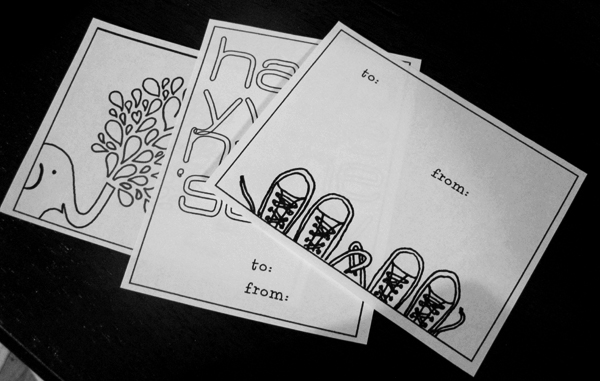 |
| Forbidden foods... (Credit: BlueWaikiki.com via Flickr) |
I mentioned in a recent post that we had visited our allergist, Dr. P, for my kids' yearly check-in. Aside from re-testing for milk, peanut, tree nut, and a couple random allergies, I was curious to hear what my allergist, Dr. P, had to say about
Callan's and Ryken's accidental ingestion of a baked good that contained butter. It happened in July while camping in Yosemite -- with zero cell reception, to my horror -- but both boys had absolutely no reactions -- to my shock. Did this mean severely-allergic Ryken was safe to eat milk in baked goods now?
Dr. P asked a lot of questions about the ingestion --
Was it butter only? (yes)
Do I know what kind of butter? (unsalted, but I didn't have any further details)
Were there any other possible allergens in the baked good? (nope)
How much did he have? (just one but I don't know how much butter is in each serving)
Dr. P also wanted to know about other reactions to milk that he has had in the past year. I told her about Ryken eating the salami that had nonfat milk powder and how he developed a rash around his mouth, some tongue-tingling, and abdominal cramps even after Benadryl was administered. How much did he have of the salami? Was milk the only questionable ingredient?
While Ryken's no-reaction consumption of the baked good was encouraging, Dr. P emphasized that this didn't necessarily mean that he would be completely fine with all baked goods. His reaction was very situation-specific and we would need to recreate the exact ingredients, amounts, and baking temperature to be more confident in the safety of adding milk products into baked goods. Much of the milk protein has been removed in the process of making butter so this could explain why some milk-allergic people can tolerate butter products but not more milks and cheese products which are more protein-rich.
In addition to Ryken's allergic reactions in the past year, Dr. P and I also talked about advances in allergy research. A team of doctors at Johns Hopkins School of Medicine recently studied
the effectiveness of sublingual and oral immunotherapy as methods of desensitizing subjects from their cow's milk allergy. Sublingual immunotherapy is a type of allergy treatment in which small doses of liquid protein (in this case, liquid milk extract) are placed under the tongue. In oral immunotherapy, subjects ingest the allergen (dry milk powder was used) in gradually increasing amounts. The Johns Hopkins study had some subjects undergo only sublingual immunotherapy while others were treated with sublingual then oral immunotherapy. Of the subjects who also received oral immunotherapy, half of the group gradaully built up to ingesting 1 gram of milk daily and the other half received 2 grams of milk. To test the effectiveness of the therapies, subjects were challenged with 8 grams of milk after 12 weeks of therapy and then again at 60 weeks.
Of the three therapies, the group that received sublingual and oral immunotherapy with a
higher daily dosage of dry milk protein had the highest rate of passing the milk challenge.
Dr. P had attended a conference last year at which researchers at Johns Hopkins had shared these findings. Oral immunotherapy looked to be the answer to our food allergy prayers. Dr. P and her peers were equally excited about the promising results of the therapy and couldn't wait to get the green light on beginning therapy on their own patients. However, the lead researcher who presented the findings cautioned allergists from jumping into therapy just yet.
The therapy was successful in enabling many subjects to eventually consume milk products. For subjects who passed the 60-week milk protein challenge, therapy was discontinued. Sadly, a follow-up study of "graduated" test subjects found that 6 of the 15 who had participated in some form of oral immunotherapy (1 gram or 2 grams of dry milk protein) became susceptible to allergic reactions again. 2 of these 6 became reactive again to milk protein only after being off the therapy for one week. The comeback allergic reactions were more serious for subjects who underwent oral immunotherapy than for those subjects only exposed to sublingual (under the tongue) immune therapy. I assume this is because oral therapy exposed subjects to larger amounts of milk protein. The more exposure to allergens, the more powerful the body's response in trying to attack it.
Researchers are not sure what is going on. It seems that test subjects were susceptible to relapsing into allergies if they did not keep up with a certain level of daily milk intake on a daily basis. However, it is not clear to researchers
how much and
in what form milk must be maintained in the body to avoid stripping subjects of the benefits of the therapy.
 |
| Fear not, Soy Dream! We have not foresaken thee for milky pastures! |
I can see how this is a dilemma especially for kids. Heck it's tough enough
for me to remember to drink enough water everyday and sometimes I eat less fruit than I ought to be eating. But lucky for me, aside from my overall well-being, there is no immediate risks to me if I slack. My kids, however, could potentially revert back to their milk-allergic selves if they didn't have enough milk within a certain frame of time. Would they need to follow a routine like taking medicine in the morning, where I'd hand each of my sons an 8 oz. glasses of milk and they would have to diligently drink every last drop and hope it's enough to activate their daily "milk allergy armor"? I certainly couldn't send milk with them to school and expect that they would be conscientious about finishing it. If you have school-aged kids or teach them, I don't need to tell you that lunchtime and snack/recess is all about maximizing their playtime; most kids rarely finish their lunches and my son's bare-bones lunch of a sandwich/half an apple/water always comes back with leftovers.
With such uncertainty and the added threat of more severe reactions from
increased exposure through oral immunotherapy, it is too risky for
allergists to begin such treatment on their own patients. More research
must be done before a course of therapy can be adopted. So in my world, milk products are still off-limits. A bit of a bummer when thinking of all the birthday cupcakes we will once again need to pass on but really not a huge deal. I'm used to making all our food. I actually like it (except for all the dirty dishes!) so it was just an "Oh well", two-second reaction from me.
My kids were definitely more disappointed than me. Ryken, who is 6 and now a regular in the birthday party circuit, was hoping he would finally be able to have the same special sweet treats as his peers. In recent months, his phrase of choice has been, "IT'S NO FAIR!! <insert pouty face>" Food allergies with its limits on what the kids can freely eat do indeed garner its rightful share of "no fairs".
But I'd rather take safety than fairness.








































